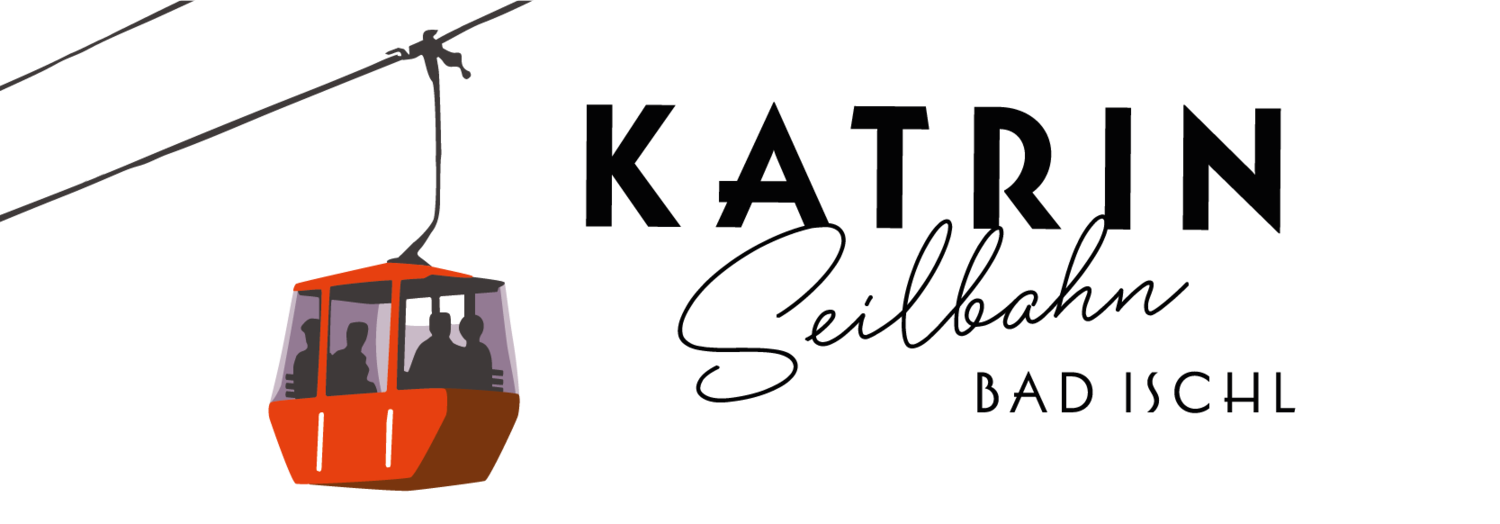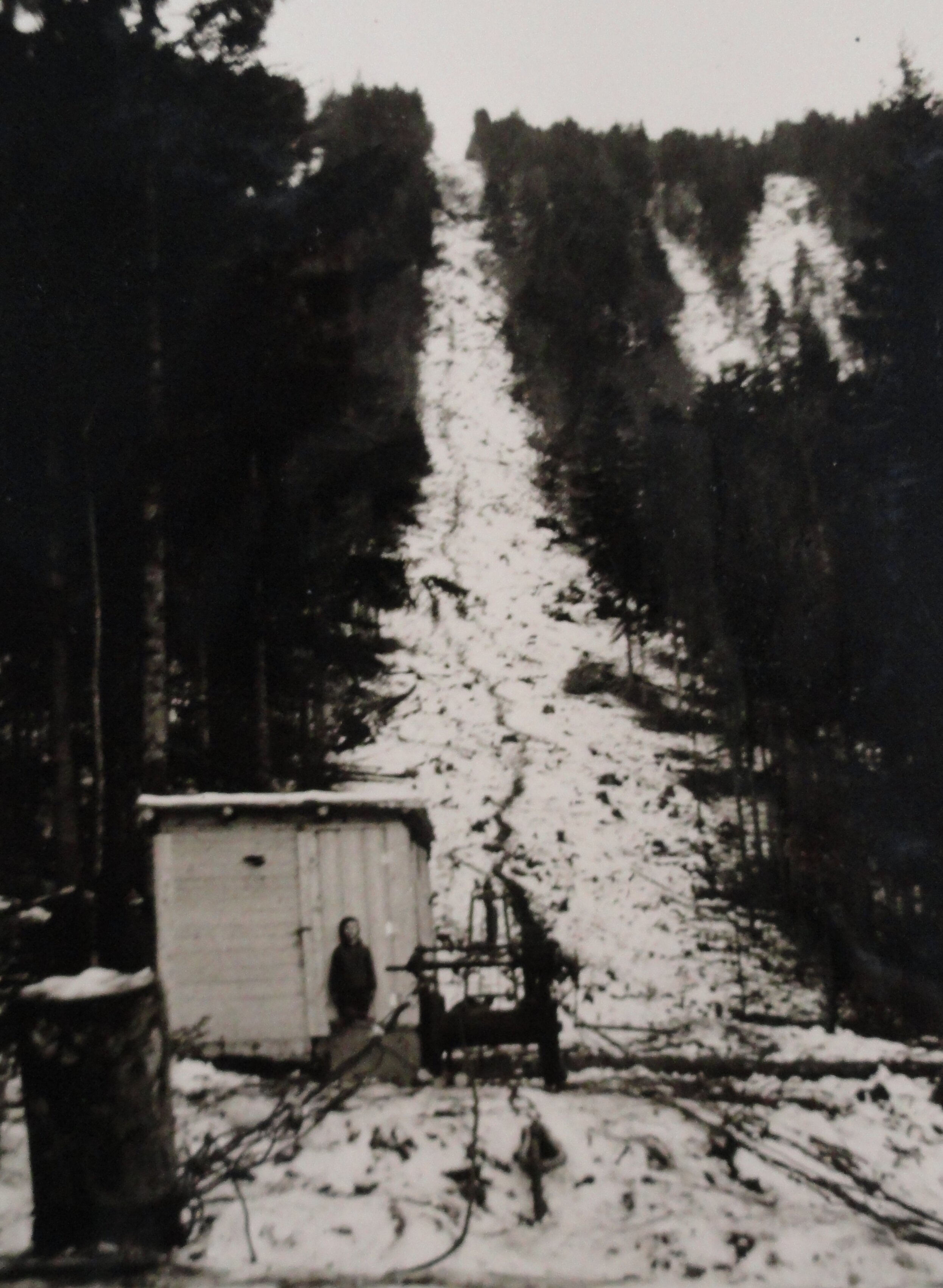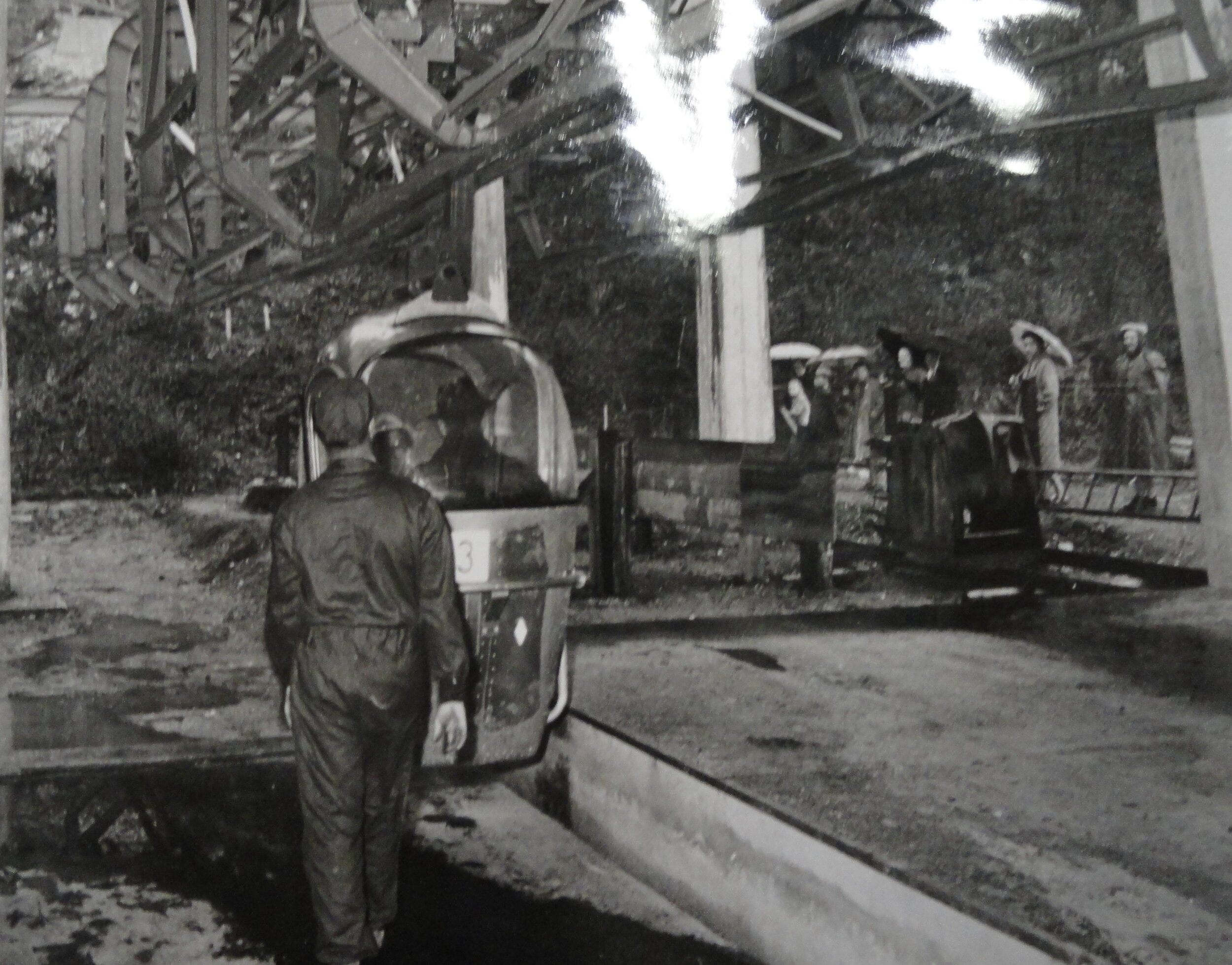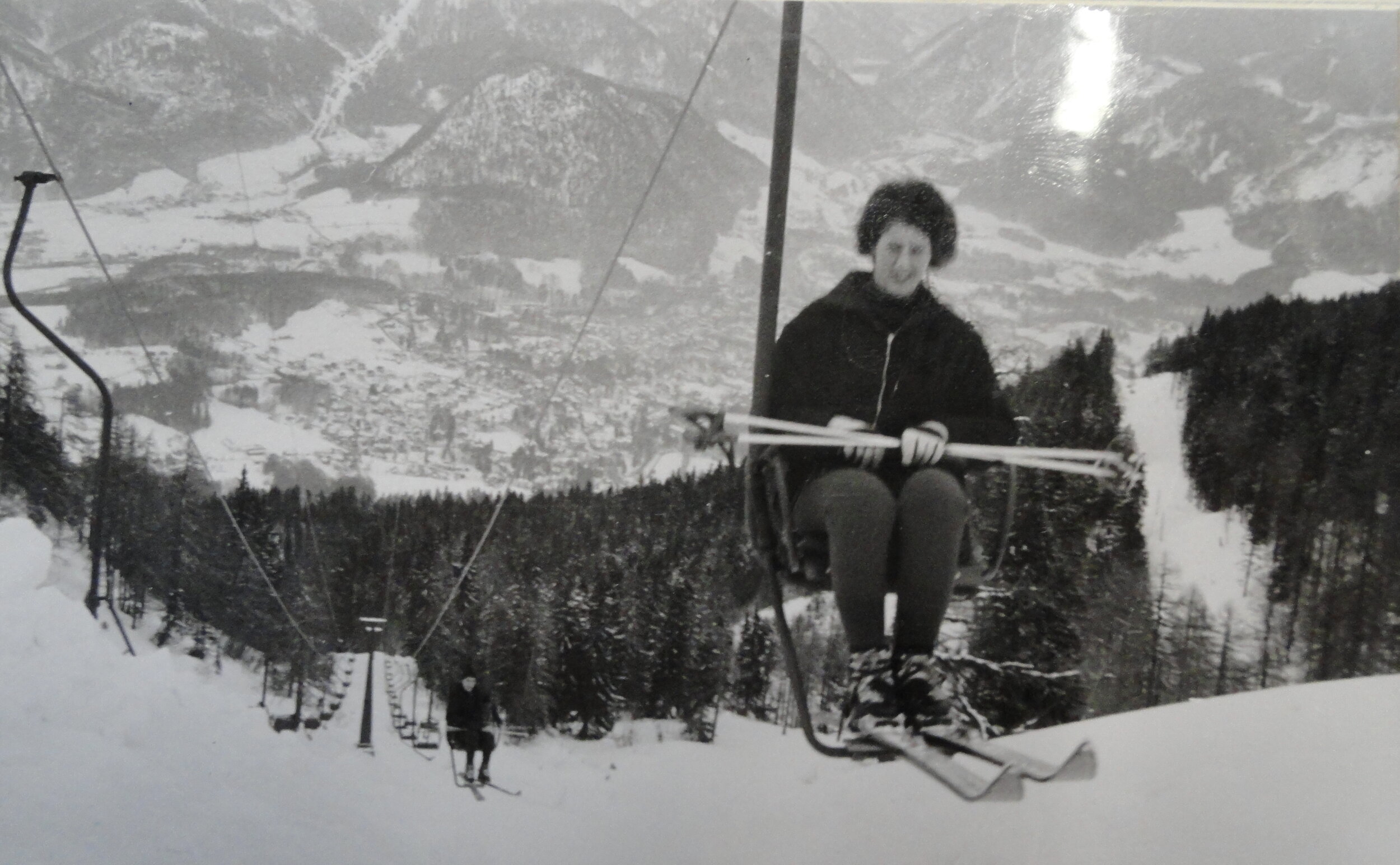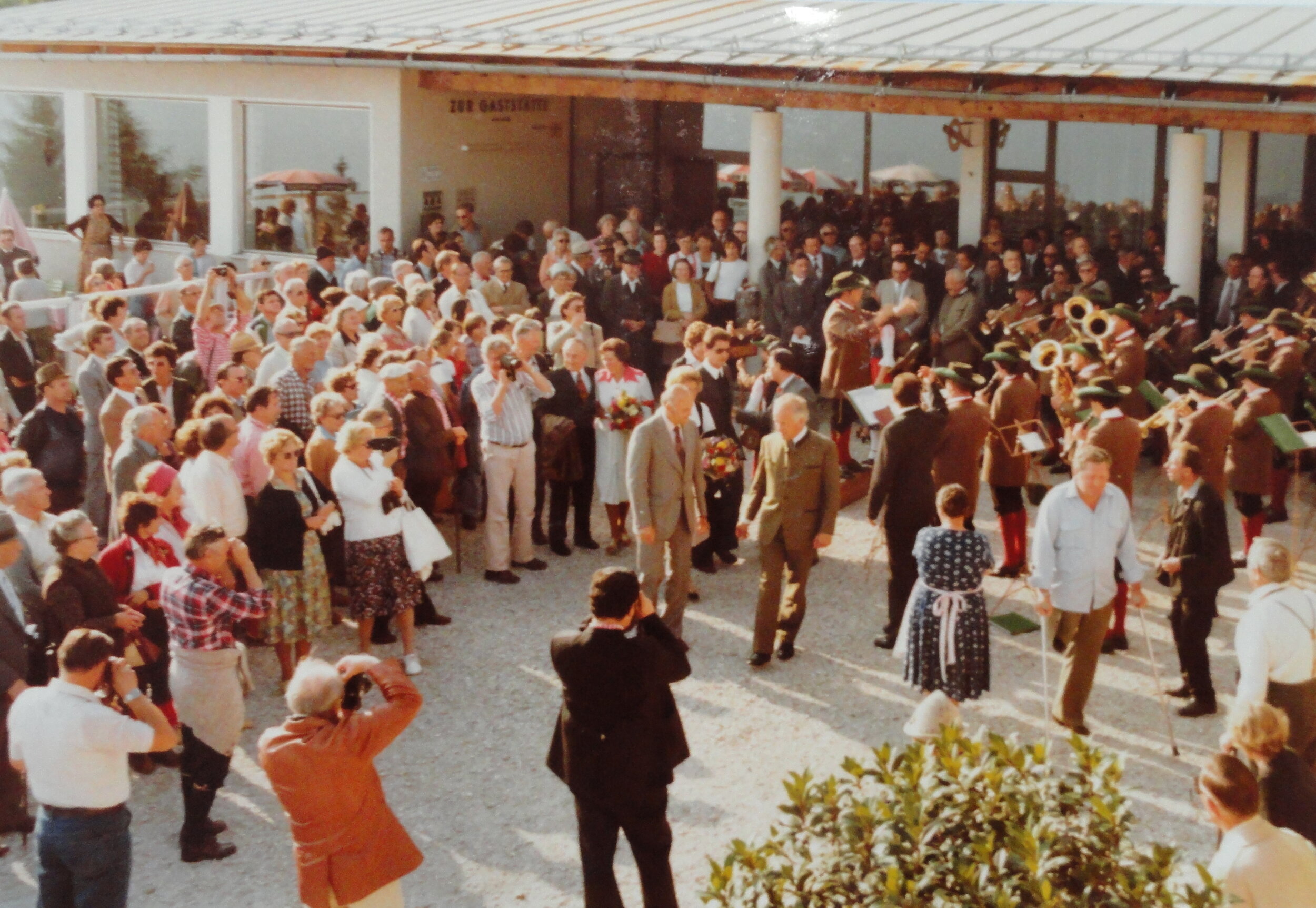Katrin cable car
THE story of Austria's first monocable gondola lift
1910-1955
The ropeway history in Bad Ischl began in 1955 with the founding of Katrin-cable car AG. For the construction of the planned cable car , a material ropeway was built in 1957, which transported over 1,000 tons of construction material within six months. Unlike in other Austrian areas, where double-cable ropeways were used, the single-cable system was chosen for the first time in Bad Ischl.
The Katrin cable car was completed in 1958 and officially opened the following year with the participation of all the VIPs of Upper Austria. The original Katrin cableway was built by the Kienast company according to the license for the detachable system of the Swiss company Oehler Aarau. This was the most special feature of the ropeway - carriers were attached to the haul rope at equal intervals, to which the cabins were automatically coupled by means of hooks. At the station entrance, the cabins were released from the carrier again and disembarking and embarking took place at a standstill.
It was probably the most curious couplable system of all time, but required regular time-consuming and labour-intensive moving of the carriers on the haul rope. These circumstances, as well as some miscouplings, led to this system being supplanted by other couplable systems using haul rope clamps. Apart from the Katrin ropeway, only a few other ropeways in Switzerland and the French licensee Applevage in France were built using the Oehler system.
In Bad Ischl, a total of 49 two-seater light metal cabins were available to transport passengers.
At first, the railway was only in operation in summer as an attraction for spa guests in the imperial city.
1957-1964
As early as December 1964, a single-seater chairlift was opened on the Katrin. Due to its north-facing position, the route of the chairlift enabled skiing operations until spring and led to the year-round operation of the Katrin cable car.
After almost twenty years, the old cable car ceased operation in January 1976. Only a few optimists believed at that time that it would go into operation again. After numerous negotiations, after the necessary funding for the renovation had been secured by the province of Upper Austria and after the municipality had taken over the cable car, the construction of a new cable car on the same route was pushed through. The reconstruction of the cable car was carried out in only seven months of construction time and the trial operation started before Christmas 1978.
1979-2021
The ceremonial opening took place in 1979. The installation was a modern (for the time) 4-car gondola lift from the Girak company with screw-type clamping devices based on the Müller system. The conveying capacity was almost doubled from 200 p/h to almost 400 p/h. The existing stations were removed from the old railway. The existing station structures and all truss supports from the old railway were reused. For the track extension to 4.00 m, new wider cross girders with lifting trestles and maintenance platforms were installed on the old cross girders. In order to improve wind stability, the two 580 m long rope sections of the old ropeway with high rope guides were shortened by installing some new supports so that the haul rope now runs at tree height. The total number of supports has thus increased from 17 to 25.
For the first time in Austria, a rope inclination of 100 % was achieved on a single-cable ropeway.
In order to make do with the existing station widths, 46 newly developed cabins of the type Austro Panorama from the company Traunsteinwerkstätten Josef Swoboda (today Carvatech Karosserie- und Kabinenbau GmbH) with automatic sliding doors were used. Compared to earlier cab models with hinged doors, this made it possible to maintain the existing clearance gauge in the station loop when swinging the cab out to the side.
As with the old lift, the drive is located in the top station and the haul rope is tensioned in the bottom station by means of an 18-tonne tensioning weight. The total construction costs for the new cableway amounted to 26 million shillings at that time.
During a further conversion in 1996, the screw terminals that no longer complied with the new regulations were replaced by cam terminals from Girak. Despite the largest web inclination of 100 %, all official requirements could be met with a single terminal. The station equipment could be retained, only the coupling points with the clamping force test were added. In less than four decades, the Katrin cable car was thus equipped with its third grip system.
The outdated single chair lift 'Katrinlift' was replaced in 1997 by a new double chair lift from Girak-Garaventa. In 2009, the electrotechnical equipment of the lift was modernized, and already one year later the skiing operation was stopped. The as-new double chairlift was sold and reinstalled in Ski Park Gruň in the Czech Republic in 2013. Since then, the Katrin cable car has been in operation only for pedestrians, of whom it transports around 100,000 annually.
Visitors enjoy the view of Bad Ischl, the Wolfgangsee as well as the Hallstättersee and in the south the imposing panorama of the Salzkammergut mountains with the Dachstein massif. The Katrin is considered one of the most beautiful mountain view in the Salzkammergut. In July 2019, the 60th anniversary of the Katrin cable car was celebrated.
Text: International Ropeway Review 3/2020, Radim Polcer, Roman Gric
TECHNICAL DATA
4-person cable car Katrin-cable car, Bad Ischl
| Altitude valley station | 474 m |
| Altitude mountain station | 1.415 m |
| Oblique length | 2.490 m |
| Height difference | 941 m |
| Number of supports | 25 |
| Conveyor rope diameter | 36 mm |
| Drive | Mountain station |
| Engine power | 280 kW |
| Clamping device | Bottom station (tension weight) |
| Number of cabins | 40 |
| Travel time | 11.8 min |
| Max. Driving speed | 3.5 m/s |
| Max. Conveying capacity | 388 P/h |
| In operation since | 1978 |
| Manufacturer | Girak |
